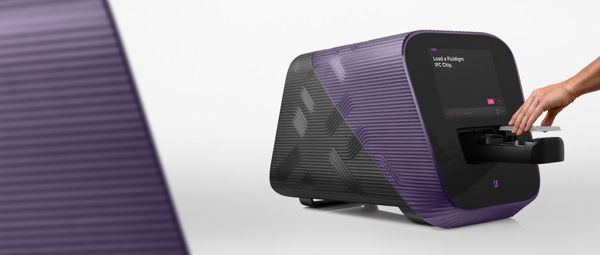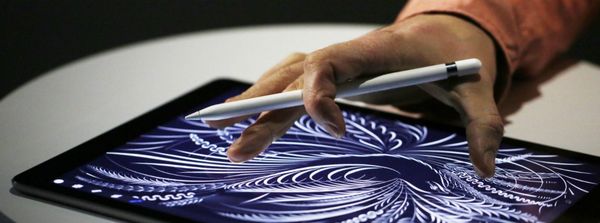



The Best Inventions of 2015 released

The prestigious "Time" magazine published annual round-up of the best inventions making the world better, smarter and—in some cases—a little more fun. "ICTnews.az" electronic news service is publishing the most interesting innovations released in Time’s annual list "The Best Inventions of 2015.
Eko Core
If there is one aspect of medicine that’s more art than science, it’s the way doctors listen to heartbeats—trusting their fallible ears and memory to detect aberrations over time. Not so with Eko Core. Once the $199 smart adapter is attached to a stethoscope, it streams heartbeat data to the cloud so physicians can download it to a smartphone. From there, a companion app can analyze the audio and compare it to previous recordings, which may help doctors detect murmurs, heart-valve abnormalities and other conditions that "our ears are not able to," says Dr. John Chorba, a cardiologist (and mentor to one of the inventors) who’s leading an Eko trial at the University of California, San Francisco. If the device works as planned—early signs are positive—it could not only improve overall care but also drastically reduce the need for expensive tests like echocardiograms.
The Desktop DNA Lab
It can take a full day to "amplify" DNA, the technical term for making millions of copies of one strain so it can be compared with many others. Juno cuts that process to just three hours, freeing scientists to concentrate on actual analysis—a shift that makes it easier to match bone-marrow donors, find cures for genetic diseases and more. The key is Fluidigm’s proprietary microchip, which can amplify samples that are 1,000 times smaller than a drop of water. And the sleek, Yves Béhar–designed aesthetic doesn’t hurt, either.

An airoport for Drones
As Amazon, Google and others ramp up their drone-delivery tests, one question looms large: How will their home base function? For hints, the tech titans may well look to Rwanda, where workers will soon break ground on three "drone ports," designed to make it easier to transport food, medical supplies, electronics, spare parts and other goods through the hilly countryside, where road travel is difficult. The Rwanda project "is a relatively modest beginning," says Norman Foster, chairman of architecture firm Foster + Partners, which is leading the first phase of construction (scheduled to be completed in 2020). But, he adds, "it could be a catalyst," helping to solve an array of pressing health issues and creating a model for other countries looking to regulate commercial drone use.

The Virtual Brush and Canvas
In the 450 years or so since its invention, the pencil has become so ubiquitous, it’s easy to forget how remarkable a technology it is. It can write at any angle. Shades get darker depending on how hard you press. Marks can be erased. Reproducing this functionality digitally has vexed computer engineers for years, which is what makes Apple’s latest effort so impressive. The Pencil allows users to draw, paint or write on a screen, just as they would a sheet of paper. And it works in tandem with the iPad Pro, a tablet faster than roughly 80% of laptops sold in the past year, so there’s no perceptible delay. That combination has already sparked chatter about new ways to create art, animations, blueprints and more. "You can rest your hand anywhere and [the iPad Pro screen] totally ignores it and it just reads the Pencil," wrote Don Shank, an art director at Pixar, after testing the products in September. "It’s pretty amazing."

The Ball that teaches kids to code
At a time when demand for computer scientists is skyrocketing, most Americans get little or no exposure to coding during their formative years. Made by Many, a New York City–based digital-consulting firm, is trying to change that. Its Hackaball toy syncs with a mobile app, allowing users to program how and when it lights up—and then to see how those programs affect their lives in the real world. During one test, for example, kids set the ball to change colors at random intervals, then used it to play a hot-potato-style game. Enabling social scenarios—rather than a more isolated, screen-based introduction to coding—is the point of Hackaball, says William Owen, a strategy director at Made by Many. Its concept appears to be resonating: some 2,800 people backed the project on Kickstarter, raising $240,000.
Views: 1160
©ictnews.az. All rights reserved.Similar news
- The mobile sector continues its lead
- Facebook counted 600 million active users
- Cell phone testing laboratory is planned to be built in Azerbaijan
- Tablets and riders outfitted quickly with 3G/4G modems
- The number of digital TV channels will double to 24 units
- Tax proposal in China gets massive online feedback
- Malaysia to implement biometric system at all entry points
- Korea to build Green Technology Centre
- Cisco Poised to Help China Keep an Eye on Its Citizens
- 3G speed in Azerbaijan is higher than in UK
- Government of Canada Announces Investment in Green Innovation for Canada
- Electric cars in Azerbaijan
- Dominican Republic Govt Issues Cashless Benefits
- Spain raises €1.65bn from spectrum auction
- Camden Council boosts mobile security





















